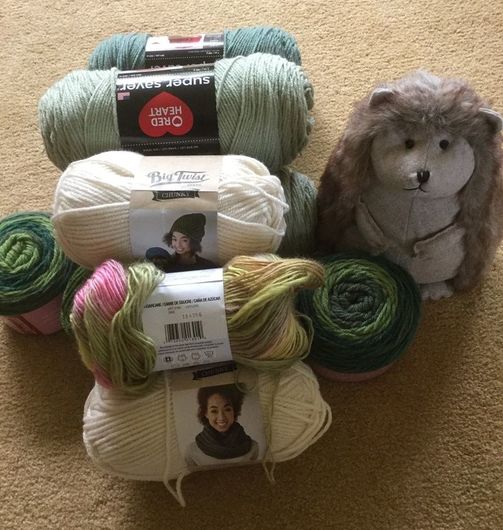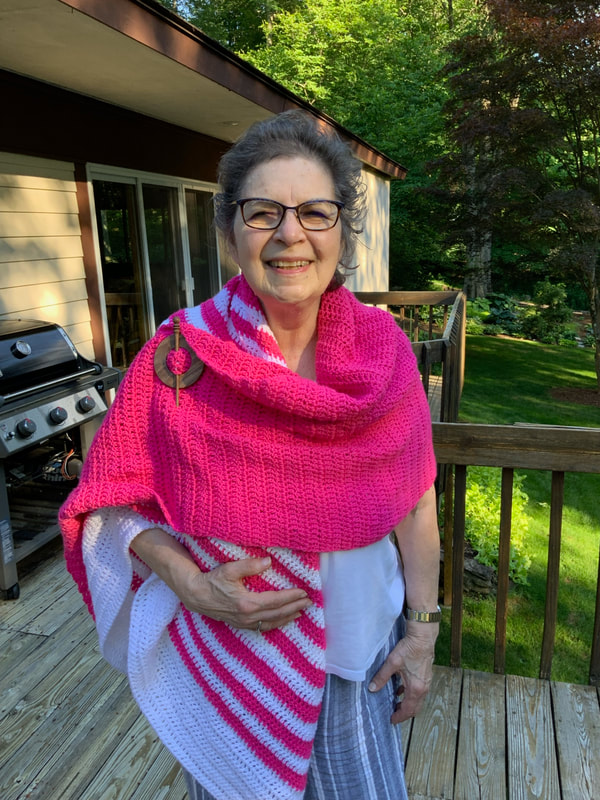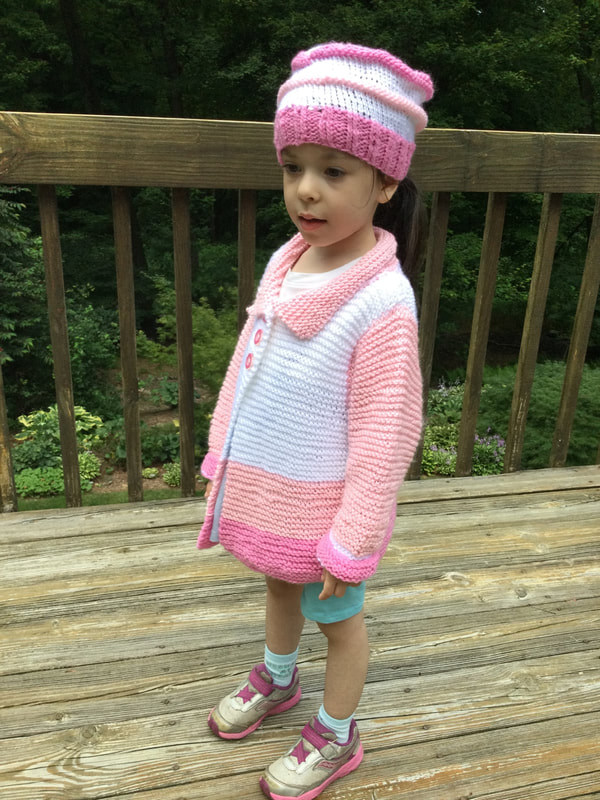 What does a garden have to do with knitting and crocheting? Something magical happens in the acreage around our home during the last weeks of April and first weeks in May. The garden that my husband has designed, planted, and maintained with exquisite effort springs to life. Each day as I slowly drive down from the main road or walk around the yard, I see how many plants have grown or added colors since the day before. This article doesn't only play homage to the creative works of my husband and supportive partner, it demonstrates how the knitter and the crocheter can take inspiration from the beautiful world around us. In my case, it is right in my own backyard.  On our frequent walks about the garden, Bert points out how individual plants are coming along and how each fits into the total scheme of things. This year our garden has inspired me in a whole new way. From a fiber arts perspective, each aspect has urged me to think of how form, structure, color, and composition could translate into projects that I could produce on my needles or on my hook. Throughout the spring and summer, I will return to this theme as a source of creativity and inspiration. One of the most dramatic features of our garden is my husbands extensive Hosta collection. There are over 1000 individual varieties (not counting repeats). Plants range in size from a few inches in diameter to over eight feet in width. Plants may be solid, striped, varigated, trimmed in a contrasting or complementary color. I did know know there were so many shades of green. Side by side, you find the yellow chartreuse and the bluest green. To offset the green of the hostas, Bert has epimediums, heuchera, solomon shield, hellibores, and Japanese maples to provide a background and a contrast. ,After examining the photos of the plants from my personal garden tour, I made a preliminary foraging trip to one of our towns megayarn and craft stores to assemble a stash that represented the colors in the garden. I have been going through my many knitting and crocheting books and online sources to see which designs are the most natural combination of color and form. However, after completing a few pieces, I realize that I have only just begun, and I need to undertake another buying trip to extend my supplies with some different colors and weights of yarns. The subtle greens and naturals were a great start. Now, I need that vibrant chartreuse and rich rusts for some other projects. A skein of yellow or cream will help me to attempt interpretation of the amazing leaf patterns. The first project I tackled was a cowl that I crocheted from a pattern on the back of Big Twist Chunky yarn. I crocheted with a K hook and needed 2 skeins of natural and one skein of juniper green. I have crocheted many scarves, but this was my first cowl. The piece can be worn long around the neck and fasted with a lovely scarf pin, or it can be doubled to bunch around the neck. This cow; was inspired from one of many hostas in the garden. This particular plant has a leaf with a creamy interior section and is trimmed with a darker sage or juniper. I was able to achieve the effect by alternating a row of double crow in natural with a row of single crochet in the accent green color. The photo on the yarn wrapper showed a darker main color and a lighter accent row that I am tempted to try. For detailed directions, you will need to go to the pattern on the back of the yarn band. This is also the first time that I have crocheted with the Twist Chunky yarn. I like the feel and texture, and it works up beautifully. The foundation chain is long and can easily by twisted. To avoid this problem, try the following technique. Start chaining for about 10 stitches. Remove the hook from the chain and insert it in the first stitch you made. Then reinsert the hook into the working stitches and continue to chain with both stitches on the hook until you are at the desired length. At this point, just draw the yarn through both loops. Your circle will not have any twists. See the photo below as a guide. For the headbands, I took a cue from the white flowers and dark green leaves of the vibernum and the white peony. I used a lighter green to balance out the color scheme. I just noticed the purple detailing at the flower's and plan to incorporate that feature in the finished flower that decorates the headband. The cable edged cowl sports a leaf-like feature down the middle of the cowl. I knitted the piece with a sage green from Red Heart on size 9 needles. It took a while to get used to the cabling, but once I got the hang of it, the following repetitions were easier to execute. This was a free pattern flyer that is available at Joanne's stores. Large wooden buttons were the perfect accent. The cowl can be worn closed or opened at the bottom for a stylish fashion statement. The designers call for 2 balls of Big Twist (worsted weight), and I think would try that yarn next time for a softer feel. I am so excited by my photos that I can't wait to take on future garden inspired projects. During the garden season, you can look forward to such topics as "Knitting and Crocheting with Leaf Art" or "Knitting and Crocheting: Pops of Garden Color."
As a fiber artists, what aspects of the natural world inspire you? Please share your thoughts and photos in the comment section of this blog or on Facebook.
0 Comments
Leave a Reply. |
Archives
November 2022
Categories
|














 RSS Feed
RSS Feed